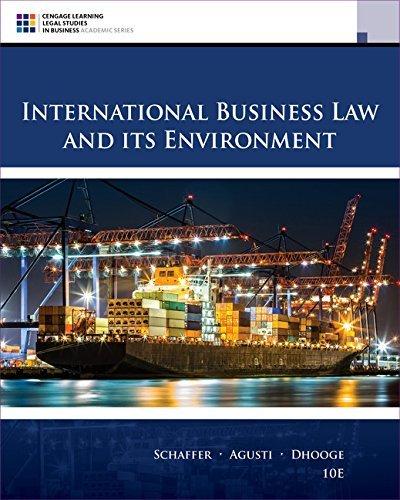After genetically engineering a bacterium capable of breaking down crude oil, Ananda Chakrabarty sought to patent his
Question:
1. The foregoing decision was decided by the Supreme Court by only a 5 to 4 vote. Do less developed nations agree with the majority or minority? Why?
2. Has the development of artificial life forms been encouraged by the Supreme Court's decision? Is this a good thing? What would have happened to the Horizon oil spill in the Gulf of Mexico without crude oil-ingesting organisms?
3. Do industrialized nations like the United States tend to expand the scope of IPRs? Why?
Fantastic news! We've Found the answer you've been seeking!
Step by Step Answer:
Related Book For 

International Business Law And Its Environment
ISBN: 9781305972599
10th Edition
Authors: Richard Schaffer, Filiberto Agusti, Lucien J. Dhooge
Question Posted:





